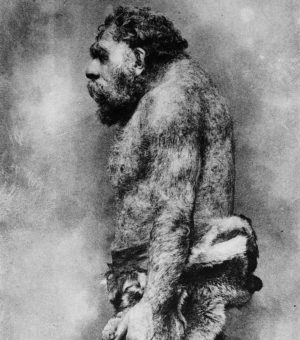
UNIVERSITY OF YORK—Research at the University of York has suggested that Neanderthals embraced healthcare practices, such as assisting in cases of serious injury and the challenges of childbirth.
Healthcare practices in this period of human evolution have often been studied alongside complex cultural behavior, mostly based around research into rituals and symbols associated with death. This new study, however, sets out, for the first time, that healthcare could have had a more strategic role in Neanderthal survival.
Previous research at the University of York has already suggested that compassion and caring for the injured and dying could have been a factor in the development of healthcare practices, but further investigation has now shown that there was evolutionary drivers behind it too.
Researchers investigated the skeletal remains of more than 30 individuals where minor and serious injuries were evident, but did not lead to loss of life. The samples displayed several episodes of injury and recovery, suggesting that Neanderthals must have had a well-developed system of care in order to survive.
Dr Penny Spikins, from the University of York’s Department of Archaeology, said: “Neanderthals faced multiple threats to their lives, particularly from large and dangerous animals, but in popular culture Neanderthals have such a brutish and strong image that we haven’t really thought too deeply about their vulnerabilities before now.
“We have evidence of healthcare dating back 1.6 million years ago, but we think it probably goes further back than this. We wanted to investigate whether healthcare in Neanderthals was more than a cultural practice; was it something they just did or was it more fundamental to their strategies for survival?
“The high level of injury and recovery from serious conditions, such as a broken leg, suggests that others must have collaborated in their care and helped not only to ease pain, but to fight for their survival in such a way that they could regain health and actively participate in the group again.”
It is generally accepted that more than 80% of the skeletal remains known to archaeologists display several injuries, some of which may have required simple remedies, such as food and rest, and others that would have required serious levels of care due to a high risk to life.
Neanderthals lived in small groups, so any one loss of life was particularly significant to the survival of the whole community. Injury, over disease, was the most common threat, as Neanderthals didn’t live in the type of environment, or in large enough communities, to be at high risk from pathogens.
Neanderthal women, however, were at risk from difficulties in childbirth. The shape of their pelvis and the size and shape of a child’s head was similar to that of modern-day humans, so it is assumed that they would also have encountered some common issues in childbirth.
Dr Spikins said: “It is likely that they would have had assisted childbirth; the role that we now attribute to midwives. Without support, they probably could not have survived the toll that the death rate of mothers and babies could have taken on their communities.
“When we look at the daily risks and dangers involved in hunting and finding food, as well as in childbirth in respect to their small hunting communities, it is not surprising that they would develop practices to improve health and reduce mortality risk.
“We can start to see healthcare as a pattern of evolutionary significant collaborative behavior, alongside hunting together, food sharing and parenting. In this we can see why providing healthcare to those in need today is such an important part of human life.”
Researchers now aim to expand this work to look at potential methods of healthcare and how far back healthcare practices can be traced.
______________________
If you liked this article, you may like Did Our Compassion Make Us Human?, by Penny Spikins, a previous premium article (now free to the public) published previously in Popular Archaeology.
Article Source: University of York news release
The research, funded by the John Templeton Foundation, is published in the journal Quaternary Science Reviews.
Cover Image, Top Left: M0001106 Restoration of a Neanderthal man in profile. Credit: Wellcome Library, London. Wellcome Imagesimages@wellcome.ac.ukhttp://wellcomeimages.orgRestoration of a Neanderthal man in profile.Published: – Copyrighted work available under Creative Commons Attribution only licence CC BY 4.0 http://creativecommons.org/licenses/by/4.0/




